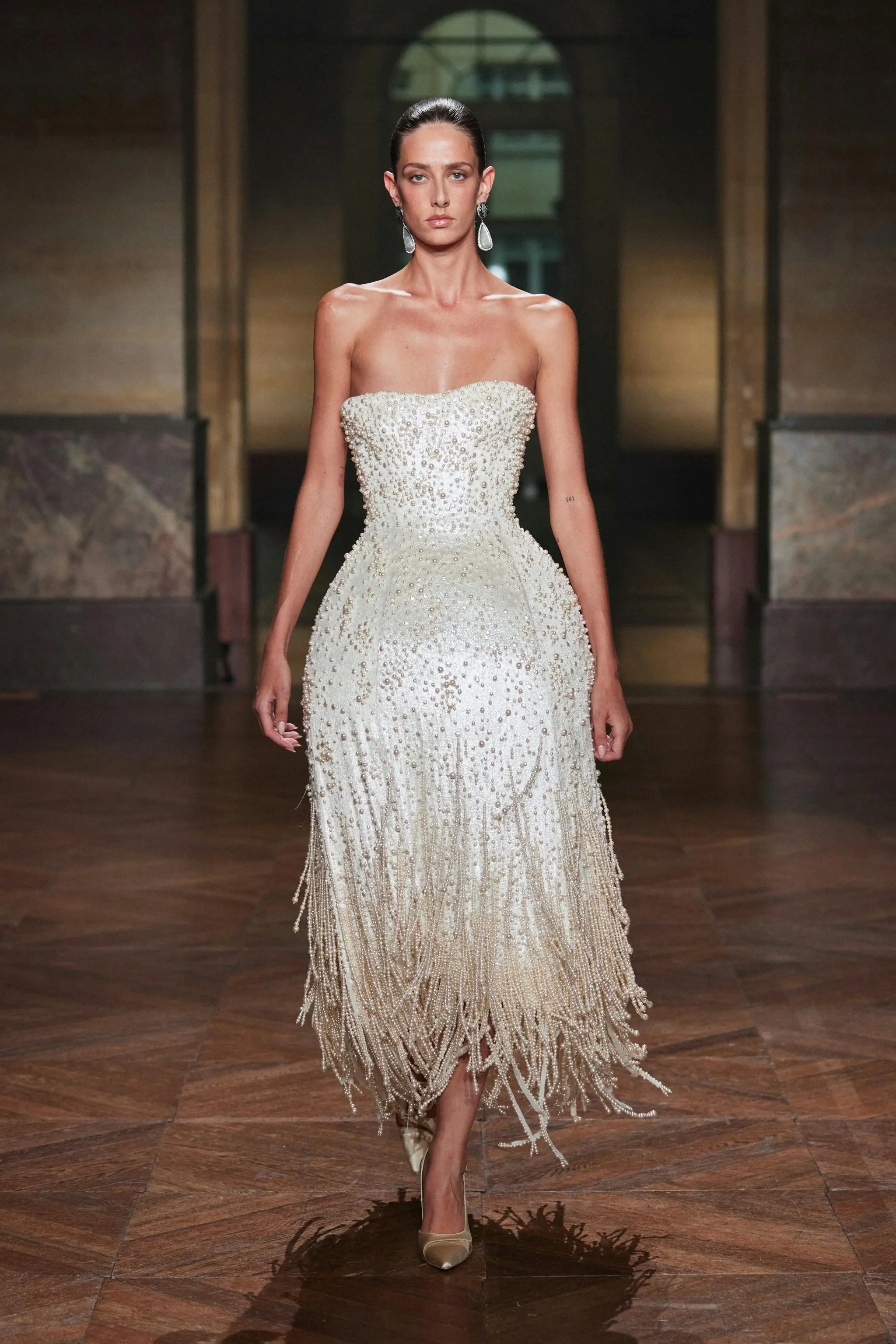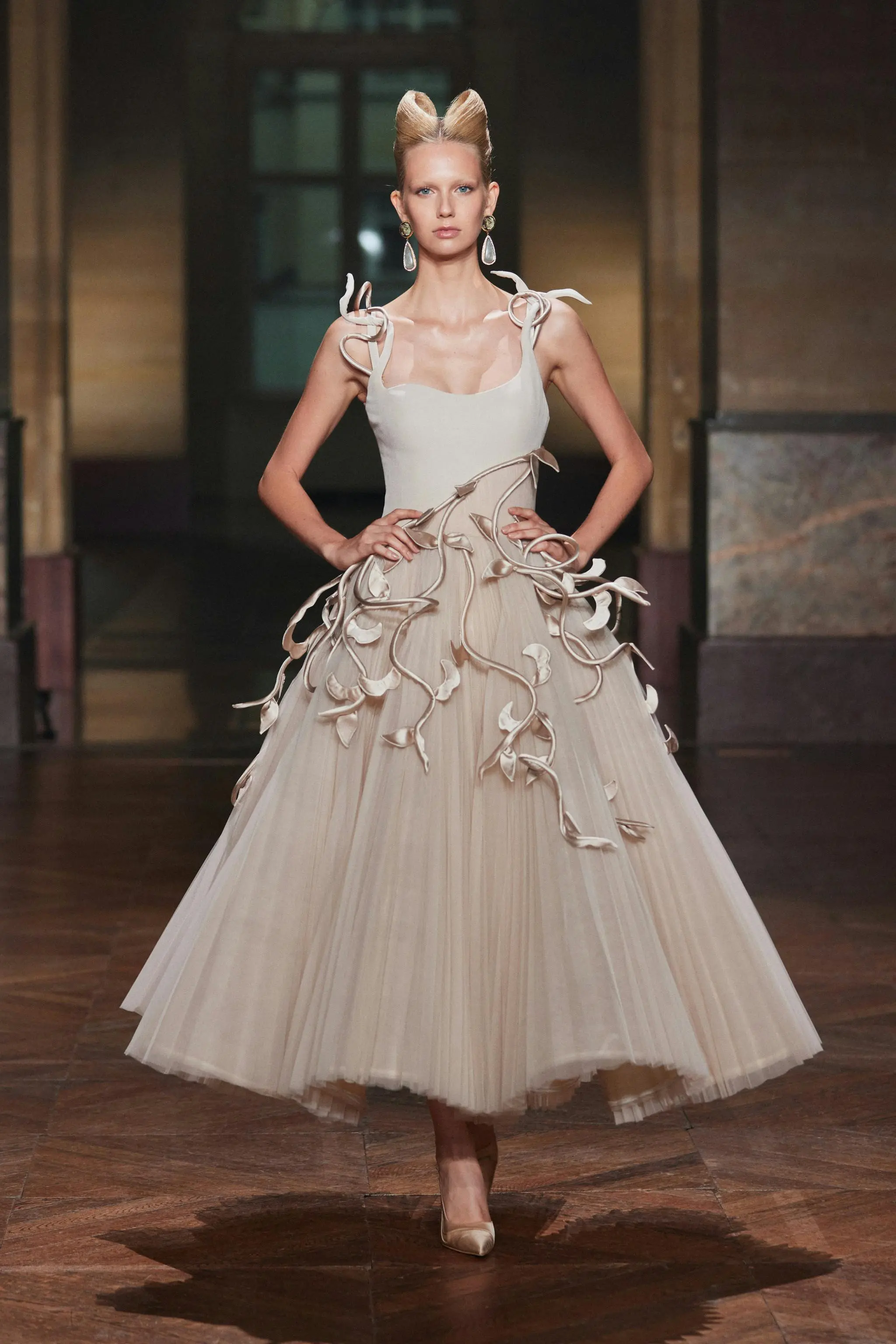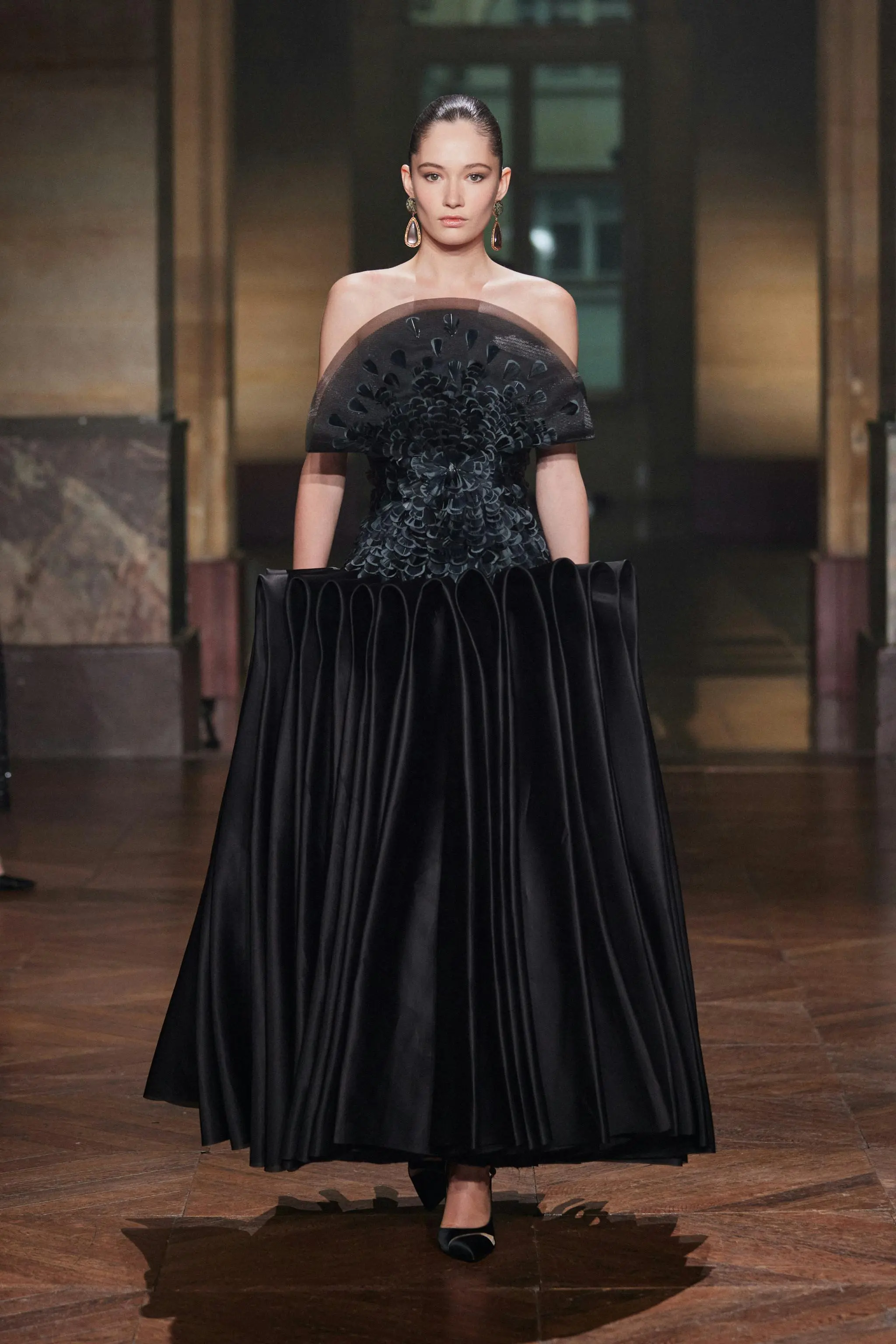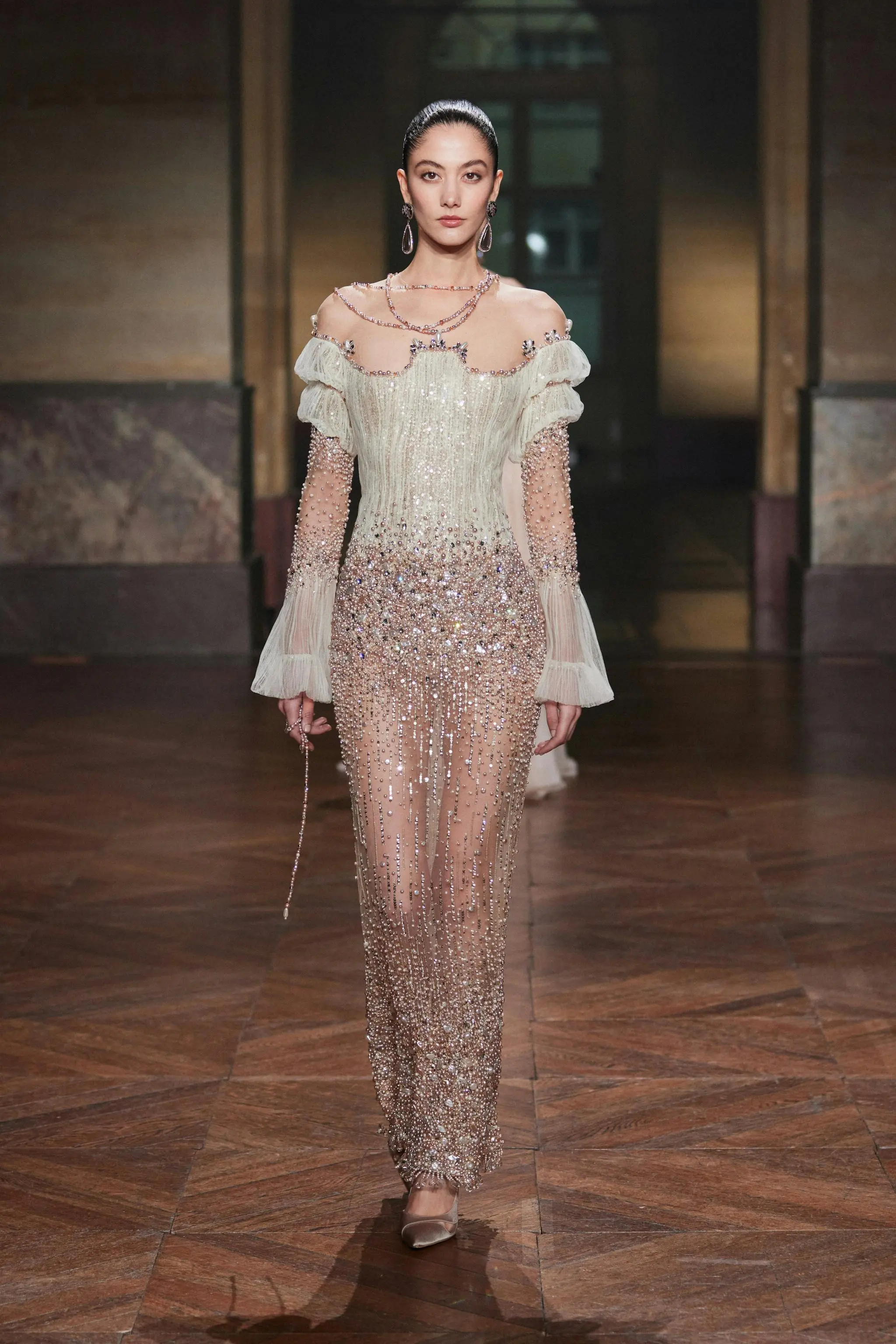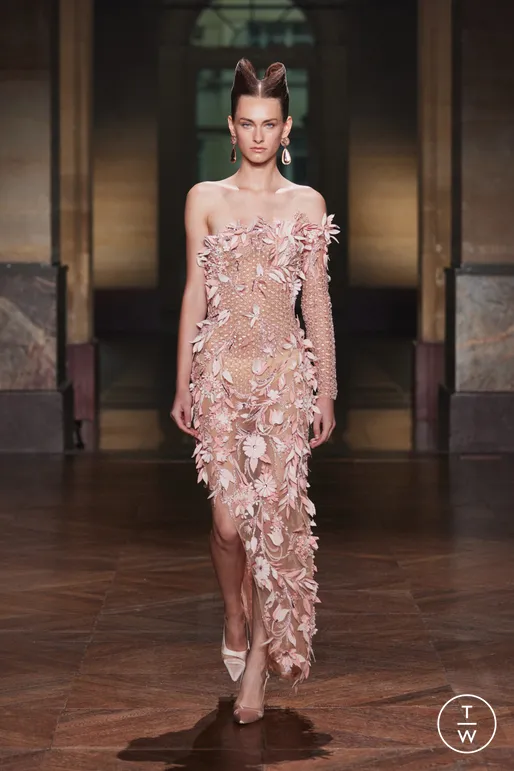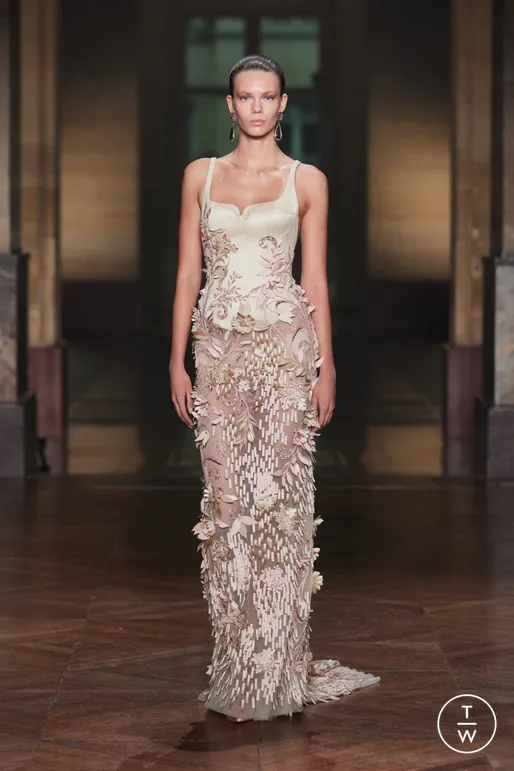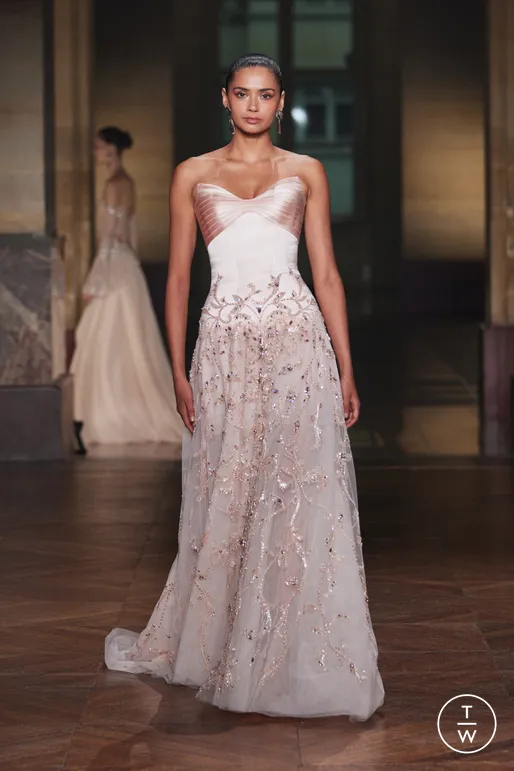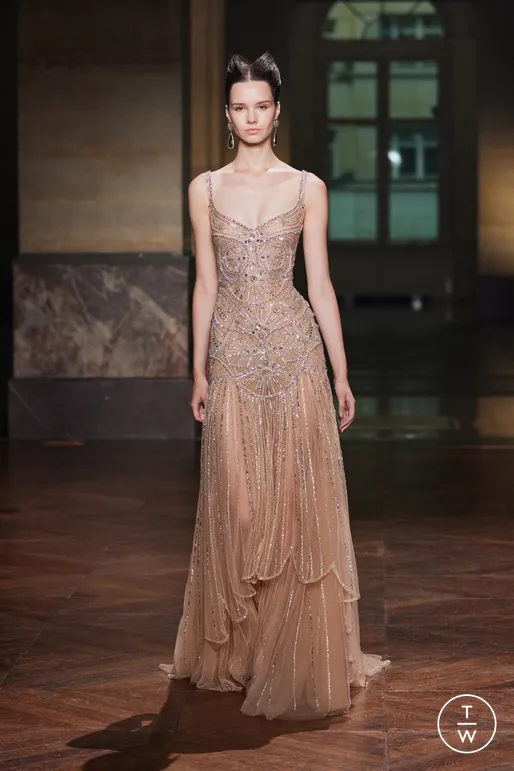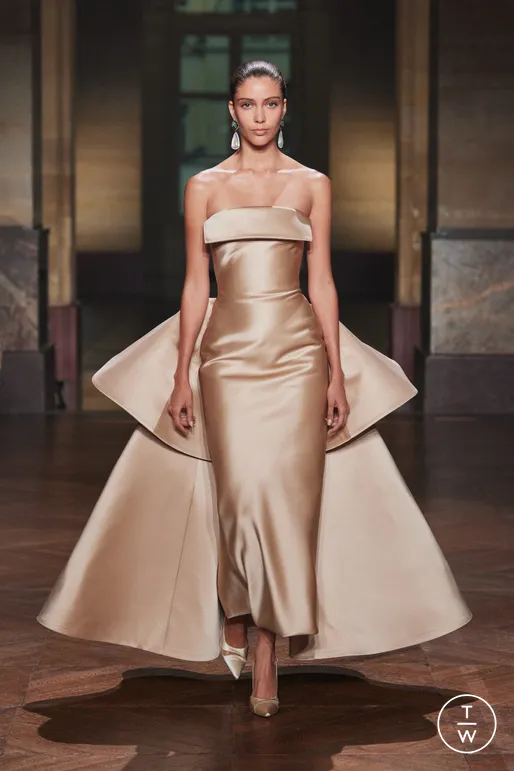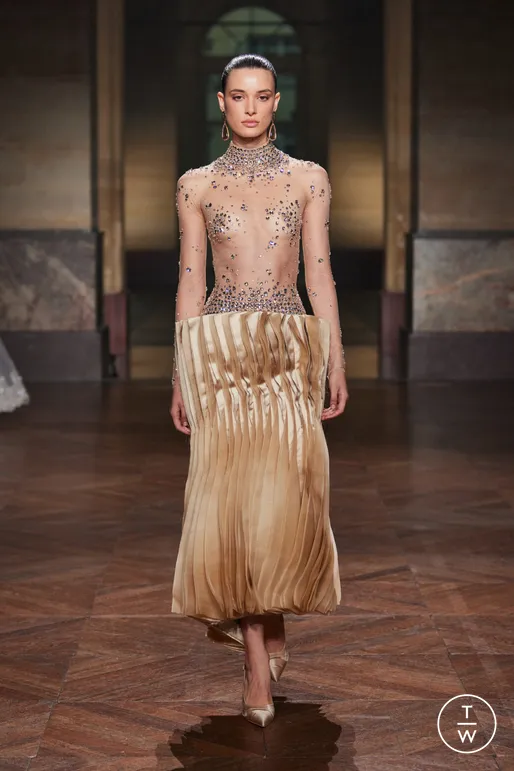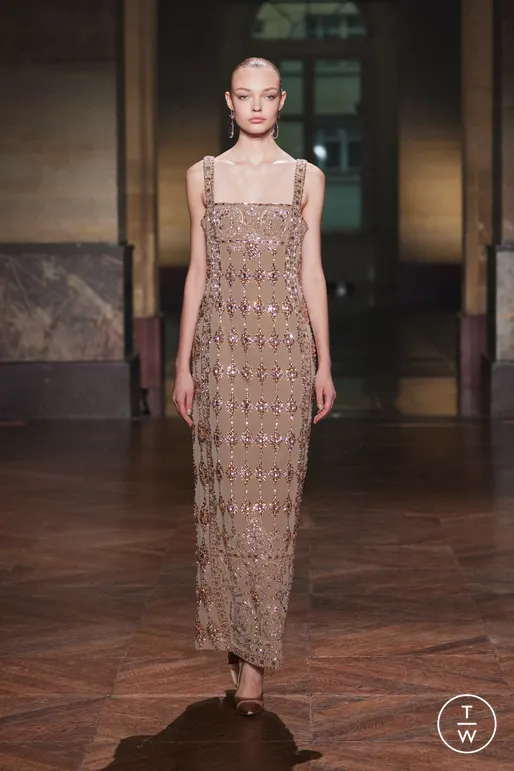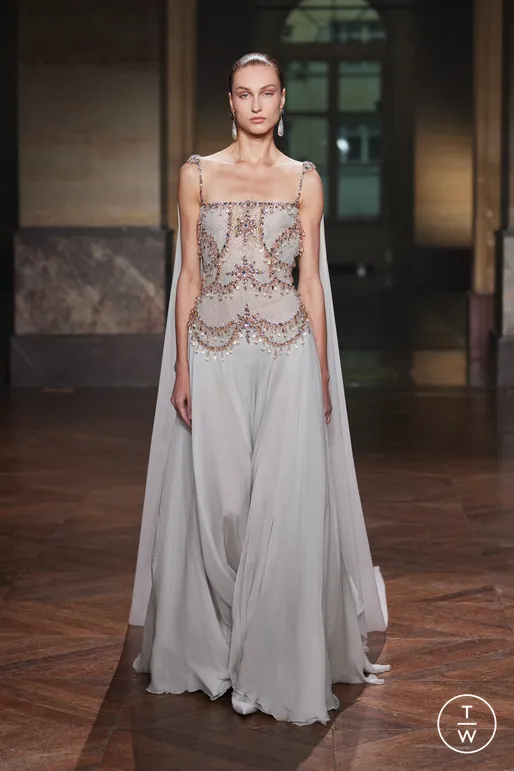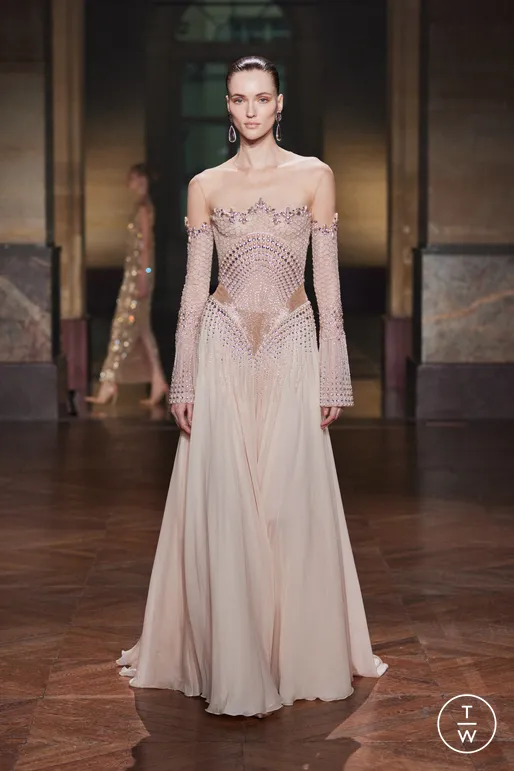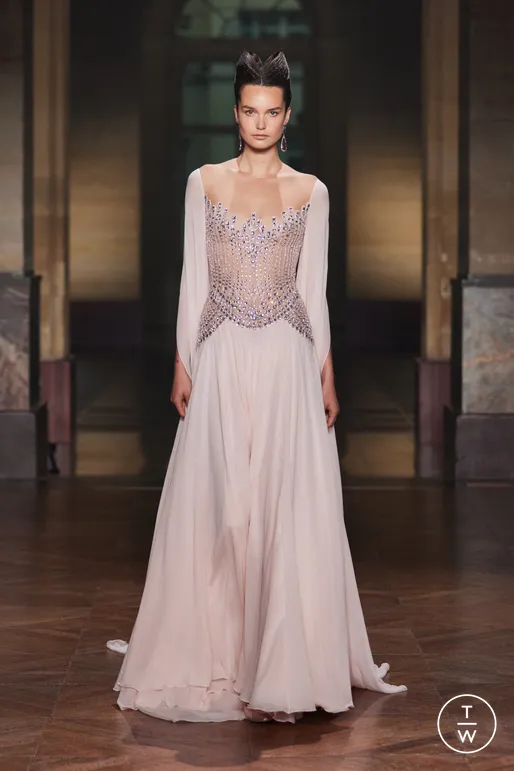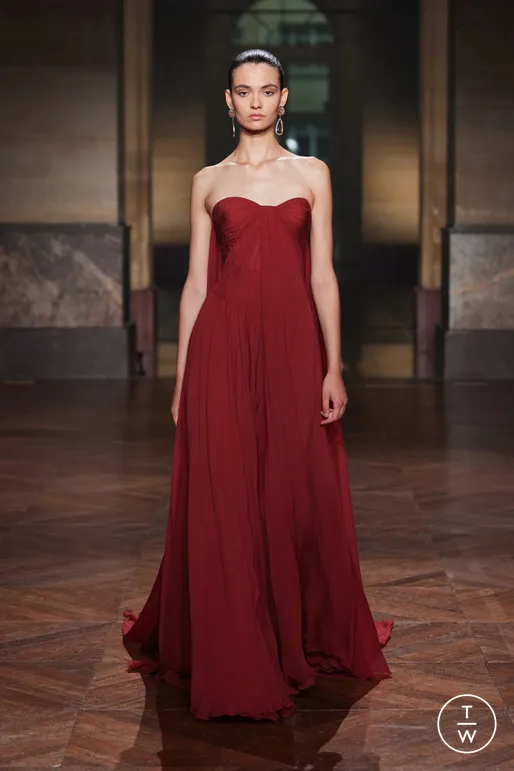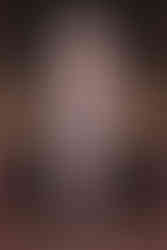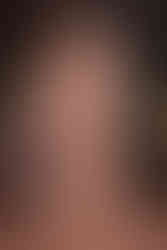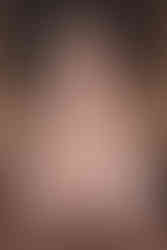GEORGES HOBEIKA SIGNE UNE ODE À LA BEAUTÉ AU MILIEU DU CHAOS AVEC « THE NEW ORDER »
- Camz

- Sep 11
- 3 min read
Dans un monde secoué par l’incertitude et les soubresauts de la modernité, Georges Hobeika nous convie, à travers sa collection Couture Automne/Hiver 2025-26 intitulée The New Order, à un moment suspendu; un instant où la beauté, telle une lumière intérieure, triomphe du chaos. Dans ce sanctuaire créatif, chaque croquis devient un acte de foi, chaque étoffe un poème en mouvement, chaque broderie une prière silencieuse adressée à l’élégance éternelle. Ici, la mode ne fuit pas la réalité : elle la confronte, la transcende, la sublime.

En revenant à l’essence même de son art; la rigueur du trait, le respect des gestes anciens, l’exaltation de la main qui façonne, la Maison affirme sa volonté de transmettre, de transformer l’invisible en grâce palpable. The New Order naît du tumulte intérieur, mais s’envole comme une réponse lumineuse, réconciliant passé et avenir, héritage et vision. C’est dans cet élan de vérité que nous avons rencontré Jad Hobeika pour une interview exclusive en amont du défilé.
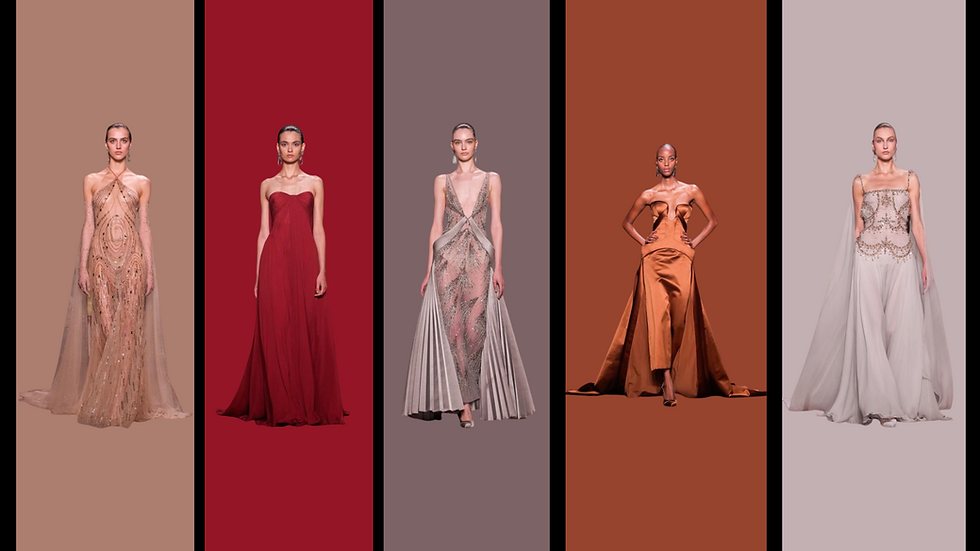
Les racines et l’héritage : un dialogue entre passé et présent
Fondée en 1995 avec l’ouverture de l’atelier à Beyrouth, la Maison Georges Hobeika a rapidement trouvé sa place sur la scène internationale avec son premier défilé à Paris en 2001. L’intérêt des familles royales et l’intégration au calendrier officiel de la Chambre Syndicale de la Haute Couture en 2010 ont marqué des étapes cruciales de cette ascension.
L’arrivée de Jad Hobeika en 2016 a insufflé une dynamique contemporaine tout en respectant l’héritage familial. Jad perpétue l’imagination, la créativité et l’amour du métier hérités de son père, tout en adaptant certains codes à notre époque, révélant ainsi un équilibre délicat entre tradition et modernité.
The color palette was as controlled as the tailoring. Neutrals dominated—ivories, muted golds, stormy silvers—before yielding to flashes of lapis blue and blood red, reminders that passion always seeps through serenity. If chaos is loud, Hobeika answered with whispered authority.
CRAFTSMANSHIP AS A FORM OF PRAYER
The collection was an ode to the very act of making. Every stitch felt like a meditation, every embroidery like a litany. Draping was mastered to the point of invisibility, proving once again that true technique is not seen but felt. The interplay of laser-cutting with hand embroidery, the balance of ancient savoir-faire with technological precision, all spoke of a house deeply aware of its heritage but unafraid to experiment.
It was this dialogue between tradition and future, silence and storm; that defined The New Order. In fact, one could almost hear the ateliers breathing in unison behind every piece. Fashion, for Hobeika, is not escapism. It is confrontation. Only instead of riots, he gives us gowns.
THE SUBTLE POLITICS OF BEAUTY
To call this collection merely “beautiful” would be missing the point. It was not about surface, but essence. In a landscape of fashion that too often surrenders to gimmicks, Hobeika anchored himself in the unapologetic seriousness of couture. His vision of femininity was neither caricatured nor clichéd. It was fluid, sensitive, and above all felt, not illustrated.

There was also a quiet political undercurrent: a reminder that peace, order, and serenity are radical acts in themselves. While the world screams, The New Order whispers. And sometimes, whispering is louder.
A NEW GENERATION, A CONTINUED LEGACY
The show was also a statement about continuity. With Jad Hobeika’s presence now shaping the house alongside his father’s legacy, the collection carried both respect for the past and an eye on the future. The dialogue between generations gave birth to a couture that was not nostalgic, but profoundly current. The New Order did not erase history. It expanded it.

A FINALE WORTHY OF A NEW BEGINNING
The closing look, an ethereal gown drenched in light-reflecting crystals, was less an outfit than an apparition. As it glided across the runway, the audience was reminded of Hobeika’s ultimate proposition: that fashion, when it remembers its essence, can outshine chaos.
One could almost hear Loïc Prigent whispering in the background: “The world is burning. She’s in sequins.”
CONCLUSION: ORDER IN THE MIDST OF CHAOS
With The New Order, Georges Hobeika delivers not just clothes, but a philosophy stitched in silk. He reminds us that couture’s role is not to distract from reality but to translate it into beauty, to hold a mirror up to our fractures and frame them in embroidery. This was a collection that did not run away from the times we live in, but stared them straight in the eye and chose grace as a response.

